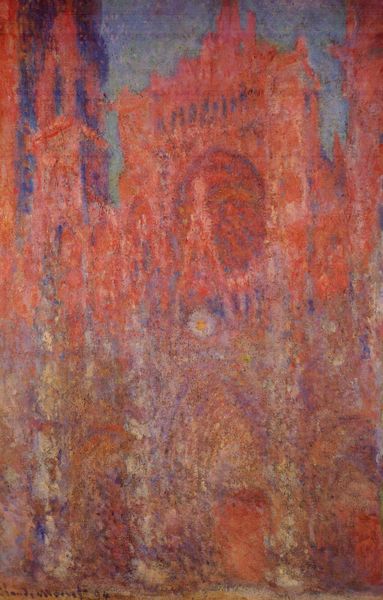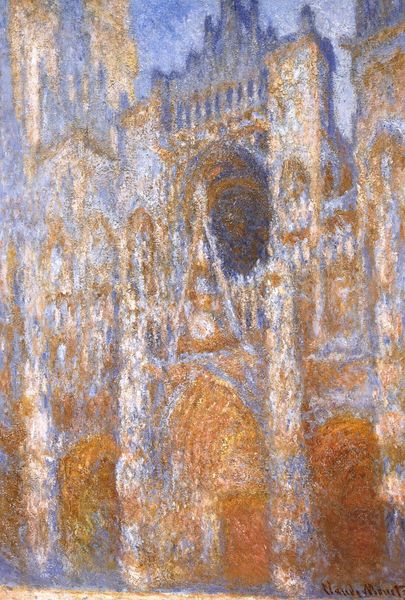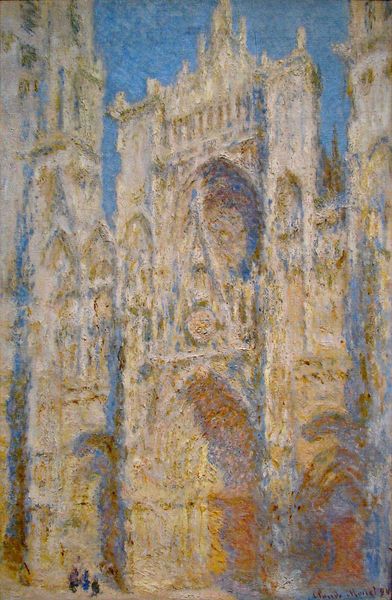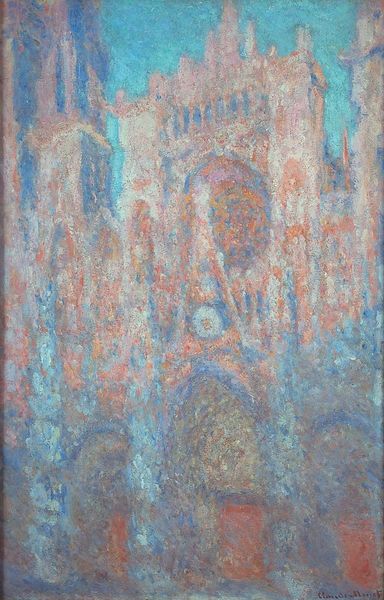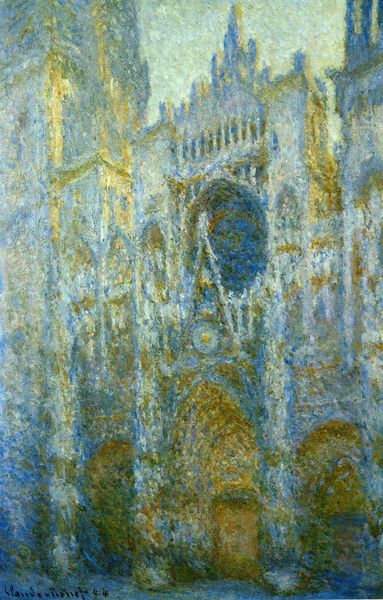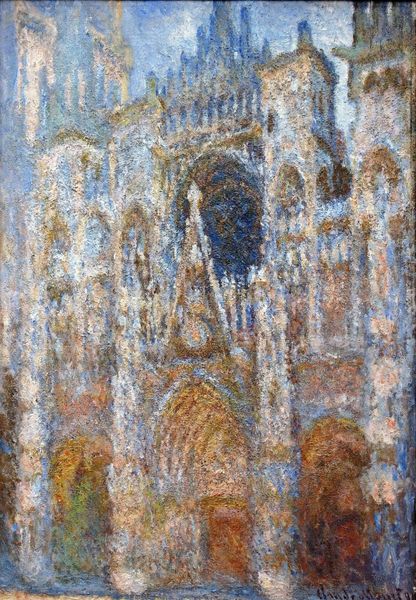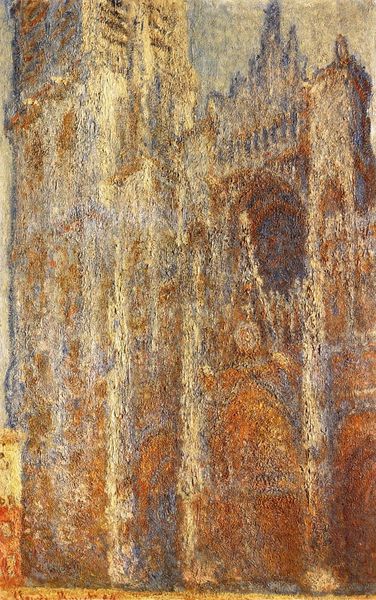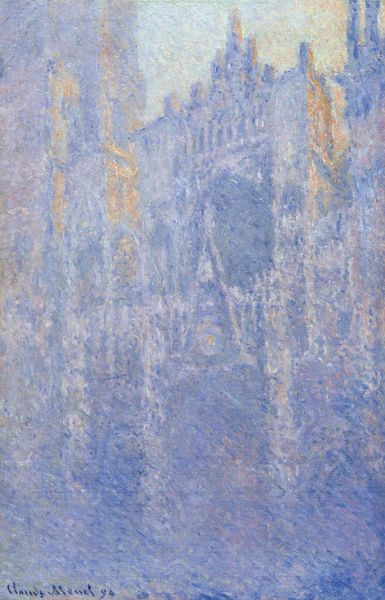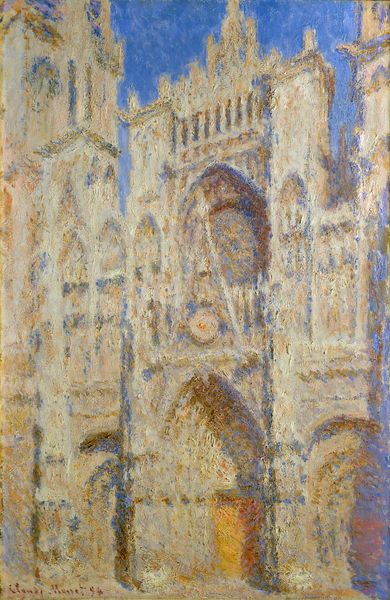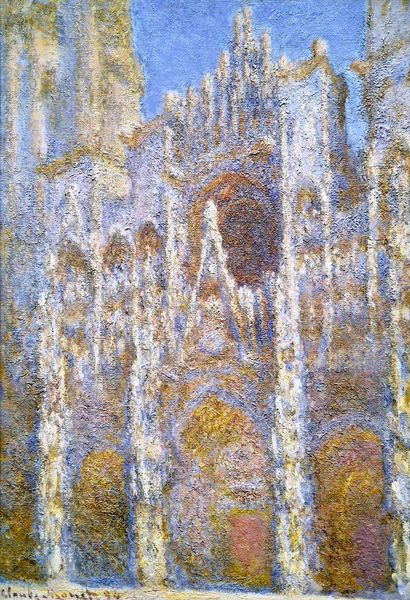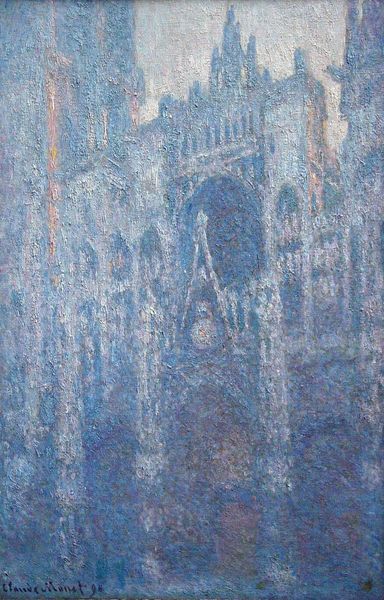
Copyright: Public domain
Curator: We are standing before Claude Monet's "Rouen Cathedral," painted in 1893. Monet, of course, is famed for his commitment to Impressionism and serial painting. Editor: The immediacy is striking! The entire façade dissolves into a textured field of light and color, rendering the stone almost immaterial. There's a profound optical exploration at work here. Curator: Indeed. Monet's series on the Rouen Cathedral presents this single subject, the western facade, under varying light conditions at different times of the day. Think of it as less about architectural portraiture and more about the effects of perception itself. Editor: The socio-political context adds another layer, doesn’t it? France in the late 19th century was grappling with the legacy of grand, often religious, structures. Monet is, perhaps subtly, decentering that traditional monumentality. Instead, we see its impression on the everyday citizen. Curator: A convincing argument, but it's impossible to ignore his systematic, scientific breakdown of color. The short, broken brushstrokes meticulously record how light transforms surfaces. Note, too, how he’s capturing reflected light and shadows that animate the stone. Editor: Precisely! That plays into the public consumption of art and monuments during this period of vast societal shifts. Didacticism was being left behind and something like beauty could lead to larger contemplations on a nation's shared symbolic objects. Monet turns the church into an aesthetic experience. Curator: There's an intriguing tension then between its historical, cultural significance and his treatment of it as merely a canvas for light and shade. The very nature of the impressionistic style inherently critiques historical representation. Editor: A work so profoundly dedicated to optical qualities can certainly allow us to interpret our relationship to history and memory in newer ways. What does it mean to remember? What are our emotional links to past cultures and values? Monet's “Rouen Cathedral” manages to propose all these queries. Curator: Viewing it now, through both aesthetic and socio-political perspectives, enhances the dialogue between materiality and experience. Editor: Ultimately, this dialogue prompts one to confront not only the essence of this formidable architecture, but, in equal measure, ourselves.
Comments
No comments
Be the first to comment and join the conversation on the ultimate creative platform.
